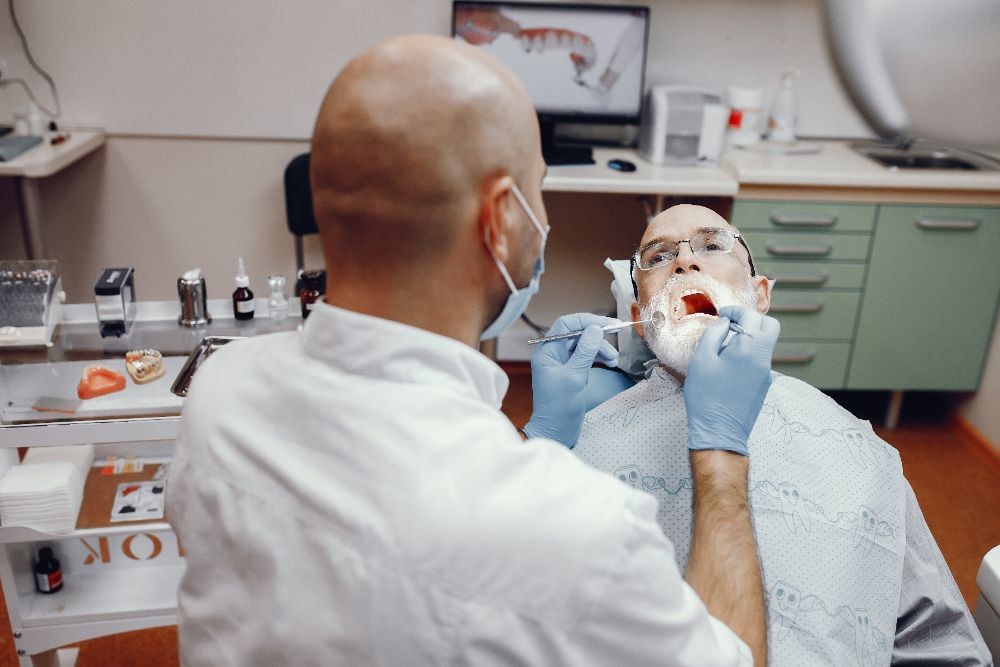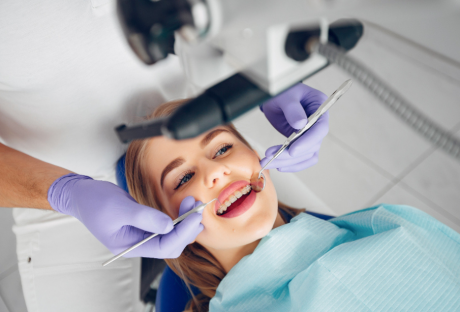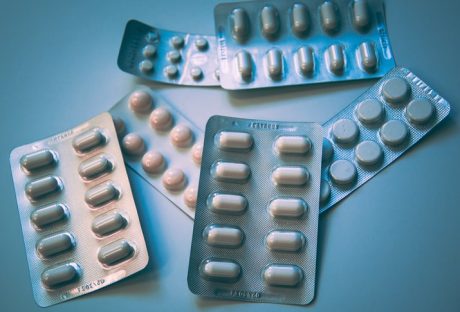Early signs of oral cancer are persistent mouth sores, unexplained bleeding, difficulty swallowing, and changes in voice. In such cases, you must visit an oncologist, an expert who deals with cancer diagnosis and treatment.
Oral cancer is one of the most common cancers worldwide. It can affect the mouth, tongue, gums, and throat. In fact, there are several factors that contribute to its development. These include tobacco use, excessive alcohol consumption, prolonged sun exposure, and infections like HPV.
However, early detection plays a crucial role in increasing the chances of successful treatment. Also, it helps in improving outcomes. In this article, you will get details about the early signs of oral cancer and what you should be mindful of. Hence, to learn more, read on to the end of the article.
What Is Oral Cancer?
Oral cancer is one of the most common forms of neck/head cancer. Generally, it affects people above 60 years of age. In fact, oral cancer first affects your lips, tongue, mouth roof, and mouth floor. Apart from that, it also affects your oropharynx, which is the last part of your tongue. Also, it might affect the roof of your mouth, the sides and the back of your throat, and your tonsils.
At first, oral cancer can look like a common problem in your mouth and your lips. For instance, you can see white patches or bleeding sores. Basically, the difference between a common problem and a potential cancer is that the problems do not go away.
Here, if you leave the problems without any treatment for a long time, it can spread through your mouth and your throat. Moreover, it will also spread to other areas of your head and neck.
8 Common Warning Signs of Oral Cancer You Shouldn’t Ignore
Recognizing the early signs of oral cancer can significantly improve treatment outcomes. Here are eight common symptoms you must watch for and discuss with a cancer specialist promptly.
1. Presence of White/Red Patches in the Mouth
A classic sign of potential oral cancer is the presence of white or red patches in the mouth without any reason. Patches can occur on the tongue, roof of the mouth, inner cheeks, or gums. Patches can be painful sometimes but are usually asymptomatic.
However, you must not ignore them. If you see any of these patches extending more than a few weeks, visit an oncologist for a checkup at Apollo Hospital Belapur. Here, you will get a thorough examination.
2. Persistent Mouth Sores
Oral cancer can be indicated by mouth sores that do not heal within two weeks. The sores may be on the tongue, inside the cheeks, or gums, or on the roof of the mouth. However, getting sores in the mouth is quite common.
Still, you must let an oncologist evaluate sores that don’t improve. Don’t ignore the sores if they are painless or persistent. It could mean something more serious.
3. Difficulty Swallowing or Chewing
Pain or discomfort when swallowing or chewing food may be a sign of oral cancer. When there is a tumor blocking the throat or esophagus, difficulty swallowing or dysphagia often occurs. In some cases, this symptom may be accompanied by a feeling that food gets stuck in the throat or chest.
However, if this continues, it is important to see a specialist to help diagnose any underlying health issue early on.
4. Unexplained Bleeding
Unexplained bleeding on the inside of the mouth is a cause for concern. It could be blood in your saliva or while you brush your teeth. However, if there is any unexplained bleeding from the gums, tongue, or mouth, you must immediately visit a healthcare professional.
Apart from that, bleeding from your gums can be a sign of a minor gum problem. However, if it’s consistent or unusual, it could mean something more serious, such as oral cancer. If you are bleeding, don’t hesitate to visit the best oncologist in Mumbai to get it evaluated.
5. Numbness or Pain in the Mouth or Jaw
If you have numbness or persistent pain in the mouth or jaw that doesn’t go away with over-the-counter pain relief, don’t ignore it. This may mean that cancer is affecting the nerves in your mouth or jaw area. This pain can get worse over time and often comes with other symptoms, such as difficulty moving the jaw or feeling fullness in the mouth.
Hence, you must consult a medical expert. Basically, the expert can help in figuring out the reason behind it and suggesting reasonable treatment alternatives.
6. Unexplained Weight Loss
Sudden weight loss, especially if it is unintentional, can be a sign of a number of health conditions, including oral cancer. Cancer cells can interfere with your body’s metabolism, leading to weight loss.
Moreover, if you get sudden weight loss along with other symptoms such as mouth sores, pain, or difficulty swallowing, see a medical expert as soon as possible. Early diagnosis can enhance the prognosis and treatment options for oral cancer.
7. Changes in Voice or Hoarseness
If you find that your voice or hoarseness doesn’t go away, it could be because oral cancer is affecting your vocal cords or the area around them. If the hoarseness lasts more than a couple of weeks, it’s a good idea to consult an oncologist. Any change in voice should be evaluated to rule out any serious condition, including oral cancer.
8. Lumps or Swelling in the Neck
Signs that the cancer may have spread to nearby lymph nodes include swelling or lumps in the neck. At first, these lumps may be painless, but they can become tender as the disease progresses. If you see any lumps or swelling in your neck, you should see a doctor right away.
An oncologist will evaluate these lumps. Also, the expert will ensure an accurate diagnosis to find whether these lumps are cancerous.
Activities that Increase Oral Cancer
The following are some of the major activities that increase oral cancer:
- Smoking (cigarettes, pipes, and cigars)
- Other tobacco products include chewing tobacco, snuff, water pipes, dip, etc.
- Drinking excessive amounts of Alcohol daily.
- Spending a lot of time under the sun without protecting the lips.
- Having the Human Papillomavirus (HPV).
- Having a history of oral cancer in the family.
Detecting Oral Cancer: The Way Forward
Recognizing the early signs of oral cancer is critical for effective treatment and improving your overall prognosis. If you notice any of these symptoms, it’s essential to seek professional medical advice promptly.
For instance, the Apollo Hospital Belapur, located in Navi Mumbai, is equipped with state-of-the-art facilities. It has expert oncologists who specialize in diagnosing and treating oral cancer. You can consult the best oncologist at Apollo Hospital for a thorough evaluation and a personalized treatment plan.
Basically, you must stay vigilant and consult an expert as soon as you notice unusual symptoms. This way, you can increase your chances of early detection, ensuring that your oral health remains in the best condition possible.
Do you have more suggestions to add on how to detect oral cancer? Please share your ideas and opinions in the comments section below.
Read Also:






















